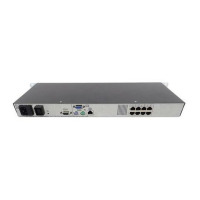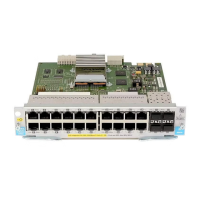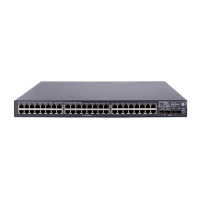163
Configuring VLAN mapping (available
only on the HPE 3100 v2 EI)
Overview
VLAN mapping re-marks VLAN tagged traffic with new VLAN IDs. The HPE 3100 v2 EI switches
provide the following types of VLAN mapping:
• One-to-one VLAN mapping—Replaces one VLAN tag with another. You can use one-to-one
VLAN mapping to sub-classify traffic from a particular VLAN for granular QoS control.
• Many-to-one VLAN mapping—Replaces multiple VLAN tags with the same VLAN tag. You
can use many-to-one VLAN mapping to aggregate traffic from different VLANs to regulate the
aggregate traffic as a whole. Many-to-one VLAN mapping is usually used together with
one-to-one VLAN mapping.
Application scenario of one-to-one VLAN mapping
Figure 55 shows a typical one-to-one VLAN mapping application scenario in which each home
gateway uses different VLANs to transmit the PC, VoD, and VoIP services.
Figure 55 Application scenario of one-to-one VLAN mapping
To meet the service provider’s network design, perform one-to-one VLAN mapping on the
wiring-closet switch, and assign a specific VLAN for each type of traffic from each customer.
Application scenario of many-to-one VLAN mapping
The application scenario of many-to-one VLAN mapping is the same as that of one-to-one VLAN
mapping, as shown in Figure 56. Ma
ny-to-one VLAN mapping maps incoming traffic of different
types to the same VLAN by customer, so the uplink device can obtain traffic statistics for different
customers based on VLANs.
